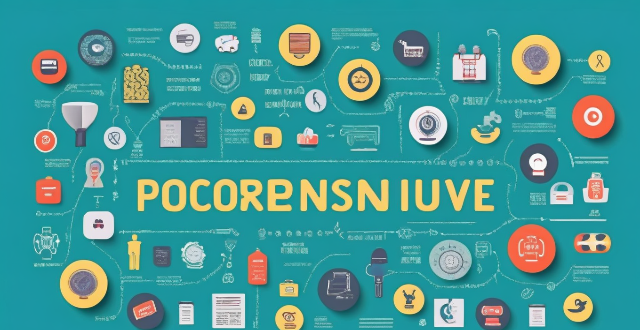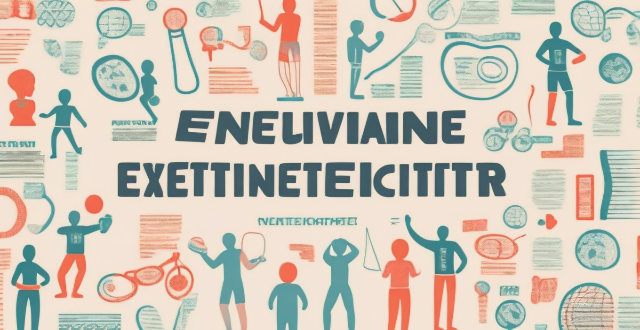Strategy Influence

How do I know if a clearance sale is the right strategy for my business ?
Clearance sales can be an effective strategy for businesses looking to move inventory and boost revenue. However, it's important to consider whether this approach aligns with your overall business goals before implementing it. Here are some factors to consider: - **Objectives and Goals**: What are your objectives and goals for holding a clearance sale? Are you trying to liquidate old stock, increase cash flow, boost customer traffic during slow periods, or enhance brand recognition by offering discounts to a wider audience? Understanding your primary goal will help you determine if a clearance sale is the right strategy. - **Inventory Analysis**: Analyze your current inventory to see if there are products that could benefit from a clearance sale. Identify slow-moving items, seasonal goods, and discontinued or outdated products. - **Customer Behavior**: Consider how your customers might react to a clearance sale. Do your customers typically look for deals and discounts? Will discounting affect how customers view your brand in the long term? Will regular customers feel alienated if they missed out on the sale? - **Market Conditions**: Take into account external market conditions that may influence the success of a clearance sale. Are other businesses in your industry also having sales? This could impact your strategy. During economic downturns, consumers may be more inclined to wait for sales. Timing your sale around holidays or seasonal changes can increase its effectiveness. - **Financial Impact**: Assess the potential financial implications of holding a clearance sale. Calculate the minimum acceptable price to ensure you don't lose money. Determine if the immediate influx of cash from a sale is necessary for operations. Consider how much budget you'll have left for upcoming inventory after the sale. - **Alternative Strategies**: Explore other strategies besides a clearance sale that might achieve similar results. Offer volume discounts instead of across-the-board discounts. Reward repeat customers with exclusive discounts or early access to sales through loyalty programs. Group products together at a discounted price to encourage larger purchases through bundle offers. If, after considering all these factors, you find that a clearance sale aligns well with your business objectives and will not negatively impact your brand or financial health, then it could be the right strategy for you. Always remember to communicate clearly with your customers about the reasons behind the sale and ensure that it complements rather than detracts from your overall business strategy.

How does AI influence coaching and strategy development in sports ?
Artificial Intelligence (AI) is transforming the world of sports, especially in coaching and strategic planning. AI technologies offer coaches valuable insights to make data-based decisions that can significantly boost team performance. AI's influence on coaching and strategy development in sports includes performance analysis, game strategy development, and injury prevention and recovery. AI algorithms can analyze vast amounts of player performance data, providing coaches with detailed insights into areas where improvements can be made. AI technologies can also assist coaches in developing game strategies by analyzing opponent teams' strengths and weaknesses. Additionally, AI plays a crucial role in injury prevention and recovery by monitoring player health and fitness levels. As AI technologies continue to advance, we can expect even more innovative solutions that will further enhance the coaching experience and drive success in sports.

How do tax laws impact my strategy for wealth growth ?
Tax laws play a significant role in shaping your wealth growth strategy. They can impact your investment decisions, retirement planning, and estate planning. Understanding how tax laws impact your wealth growth strategy is crucial for making informed financial decisions. By considering the tax implications of your investments, retirement planning, and estate planning, you can develop a comprehensive wealth growth strategy that maximizes your after-tax returns and helps you achieve your financial goals.

How often should I review and adjust my tax planning strategy ?
Tax planning is an ongoing process that requires regular review and adjustment to ensure that you are taking advantage of all available tax breaks and staying in compliance with the law. Here are some factors to consider when determining how often to review and adjust your tax planning strategy: - Major life changes such as marriage, divorce, having a child, buying or selling a home, starting or closing a business, or retirement should prompt a review of your tax planning strategy. - Changes in tax laws can significantly impact your tax liability, so it's important to stay up-to-date on any changes and review your strategy accordingly. - Even if nothing significant has changed in your life or the tax laws, it's a good idea to review your tax planning strategy at least once a year. - For businesses or individuals with complex tax situations, quarterly reviews may be beneficial to stay on top of any changes in income or expenses and make adjustments throughout the year to minimize tax liability.

What role do stakeholders play in shaping a company's CSR strategy ?
The text is a summary of the key points on the role of stakeholders in shaping a company's Corporate Social Responsibility (CSR) strategy. Stakeholders, including customers, employees, suppliers, shareholders, communities, government agencies, and non-governmental organizations (NGOs), are crucial in identifying and analyzing their interests, needs, and expectations. Companies need to communicate openly and regularly with their stakeholders to gather feedback and build trust. Collaboration and partnerships with stakeholders on CSR projects help achieve shared goals and strengthen relationships. Accountability and transparency are essential for companies to act responsibly and ethically. Continuous improvement is necessary based on stakeholder feedback. Risk management involves stakeholders in risk assessment and management processes. Legal and ethical obligations must be considered when developing CSR strategies. Innovation and sustainability can be driven by stakeholder input. A strong CSR strategy enhances brand reputation and loyalty. Long-term success can be ensured by involving stakeholders in shaping CSR strategy.

How to collaborate with influencers for product launches ?
The text provides a comprehensive guide on how to collaborate with influencers for product launches, emphasizing the importance of this marketing strategy in boosting the success of such events. The process is divided into five main steps: identifying and selecting the right influencers, building relationships and agreements, planning and creating campaign content, executing and monitoring the campaign, and conducting a post-campaign analysis and follow-up. Each step includes detailed sub-steps and recommendations, such as defining the target audience, using influencer marketing platforms for research, negotiating terms and conditions, developing a content strategy, launching and tracking the campaign, and evaluating results. The guide emphasizes the need for clear communication, mutual understanding, and professionalism throughout the process to cultivate long-lasting partnerships.

How do celebrities influence the trends in sports fashion ?
Celebrities significantly impact sports fashion trends by setting styles, partnering with brands, using social media influence, promoting healthy habits, and participating in sports events. This influences consumer choices and shapes the market for sportswear.

What are the key components of an effective climate risk management strategy ?
Climate risk management is a crucial aspect of any organization's sustainability strategy. It involves identifying, assessing, and mitigating the potential risks associated with climate change. An effective climate risk management strategy should include key components such as identification of climate-related risks, assessment of risks, prioritization of risks, development of response strategies, and monitoring and review. By implementing these components, organizations can effectively manage climate-related risks and contribute to a more sustainable future.

How do celebrities influence fashion trends and beauty standards ?
Celebrities significantly influence fashion trends and beauty standards through their endorsements, red carpet appearances, social media presence, and collaborations with designers. They set trends by making innovative style choices and promoting self-care and wellness. However, their influence is not without controversy, as some argue it leads to unrealistic beauty standards and cultural appropriation.

How can investors influence corporate behavior towards reducing carbon emissions ?
Investors can influence corporate behavior towards reducing carbon emissions by using their financial power and influence. They can do this through shareholder engagement, collaborative engagement, financial incentives, public advocacy, and strategic dialogue. By employing these strategies, investors not only promote corporate responsibility but also pave the way for a more sustainable future.

How does sports influence literary creation ?
The influence of sports on literary creation is explored in this article. Sports have provided writers with motivation and inspiration, introduced themes and characters, contributed to realism and atmosphere, and served as a vehicle for social commentary. Examples from various literary works are given to illustrate these points.

How does sports influence art expression ?
The text discusses how sports have influenced art expression throughout history and across various mediums. It outlines the impact of sports on visual arts, literature, music, dance, and fashion. The visual arts section includes sculpture, painting, photography, digital art, and motion graphics. The literature section covers sports literature, poetry, and ekphrastic poetry. The music section discusses national anthems, fight songs, pop culture, and hip hop culture. The dance and performance art section covers contemporary dance and performance art. Finally, the fashion section includes sportswear design and high-fashion collaborations. Overall, the text emphasizes the diverse and profound influence of sports on art expression.

How does social media influence consumer behavior ?
Social media has transformed consumer behavior by increasing brand awareness, influencing purchasing habits, and changing perceptions of brands. It enables consumers to compare products, share feedback, and engage with companies directly. Social media also plays a crucial role in product development by providing insights into consumer needs and preferences. Companies can foster customer loyalty through engagement and exclusive deals on these platforms. The rise of social commerce allows for direct purchases within apps and live streaming sales events. Personalization and targeted marketing, including influencer collaborations, further impact consumer choices. Overall, social media's influence on consumer behavior is significant and continues to evolve with technological advancements.

What are the positive effects of celebrity influence on society ?
Celebrities wield significant influence that extends beyond their areas of expertise, and this influence can have both positive and negative impacts on society. The positive effects include raising awareness on important issues, promoting education, cultural exchange, economic growth, sustainable living, fashion trends, and driving social change through activism. Celebrities can use their platforms to bring attention to global concerns, promote healthy lifestyles, encourage mental health discussions, support literacy programs, inspire STEM pursuits, showcase cultural diversity, boost local businesses, foster entrepreneurship, advocate for eco-friendly practices, diversify beauty standards, engage in political conversations, and strengthen community bonds. However, with great influence comes great responsibility; celebrities should strive to use their platform thoughtfully and constructively for the betterment of society.

Can celebrity influence be harnessed for educational purposes or promoting literacy ?
This article explores the potential of leveraging celebrity influence for educational purposes and promoting literacy. It outlines how celebrities can advocate for education, serve as role models, and directly involve themselves in educational initiatives. The text also suggests ways celebrities can promote literacy, such as hosting reading challenges, authoring children's books, and endorsing online courses. Overall, the article concludes that celebrity influence can be a powerful tool for fostering a culture of learning and literacy.

What is the impact of market volatility on my investment strategy ?
Market volatility can significantly impact your investment strategy by affecting risk tolerance, portfolio allocation, timing of investments, emotional responses, and both long-term and short-term goals. It's crucial to anticipate and account for market fluctuations in your approach. Diversification, rebalancing, and strategies like dollar-cost averaging can help mitigate risks and smooth out the effects of volatility over time. Emotional discipline is also essential, as fear and greed can lead to suboptimal decisions. Opportunities may arise during volatile periods, but it's important not to overreact to short-term events and maintain a focus on long-term fundamentals. A well-diversified portfolio and a long-term perspective are key tools for navigating market volatility successfully.

How does sports culture influence fashion trends and consumer behavior ?
The intersection of sports culture and fashion trends is a dynamic relationship that significantly influences consumer behavior. As lifestyles become more active and health-conscious, the impact of sports culture on fashion choices extends beyond athleticwear to high fashion and streetwear. Athleisure, collaborations between sports and luxury brands, and the influence of sports icons have redefined what's considered stylish and desirable. Consumers increasingly prioritize comfort, functionality, and sustainability in their clothing choices, reflecting a shift towards durable, high-quality sports apparel over disposable fast fashion items. The rise of fitness influencers on social media platforms further drives this trend, shaping public perception of workout gear. Overall, the sports-fashion nexus is expected to continue growing, reflecting societal values of health and wellness.

How do sports figures use their influence to promote charitable causes ?
Athletes and sports figures leverage their fame, influence, and reach to promote charitable causes, making a difference in various aspects of humanitarian work. They use their platform to educate the public about issues that need attention, share personal stories related to the cause, organize matches or events where proceeds go towards a specific charity, donate prize money from competitions, create special merchandise with a portion of sales going to support a charity, volunteer time with organizations, give back to local communities by participating in local events or contributing to community projects, meet with legislators to discuss policies that could positively impact their supported causes, engage in lobbying efforts, partner with established charitable organizations, and team up for endorsement deals that include clauses where a portion of earnings goes towards a specific charity or is used to support a social initiative.

Can sports sponsorship influence consumer purchasing behavior ?
Sports sponsorship is a marketing strategy that aims to increase brand awareness and positively influence consumer attitudes towards the brand. It works by providing increased exposure, building an emotional connection with consumers, enhancing the brand's image, and differentiating from competitors. The impact on consumer purchasing behavior can be direct or indirect, including immediate sales boosts, product trials, brand loyalty, and word of mouth recommendations. Measuring the impact involves analyzing sales data and tracking brand metrics. Success stories like Nike and Michael Jordan and Coca-Cola and Olympic Games demonstrate the potential of sports sponsorship. However, challenges and pitfalls exist, such as misaligned partnerships and overshadowing controversies. In conclusion, sports sponsorship can significantly influence consumer purchasing behavior when executed strategically and appropriately.

In what ways do data-driven insights influence training methods in sports ?
Data-driven insights significantly influence training methods in sports by providing valuable information for performance analysis, injury prevention and recovery, game strategy development, and mental health monitoring.

Is carbon offsetting effective in reducing greenhouse gas emissions ?
Carbon offsetting is a strategy to compensate for CO2 emissions by investing in projects that reduce, avoid, or absorb an equivalent amount of CO2 elsewhere. While it can provide immediate action and support clean projects, there's a lack of standardization and potential for perverse incentives. Effectiveness depends on project quality and organizational integrity. It should be part of a broader strategy, not seen as a silver bullet.

In what ways do economic factors influence the development and assessment of climate policies ?
Economic factors play a crucial role in the development and evaluation of climate policies, affecting decision-making processes, implementation measures, and assessments of effectiveness. These influences include cost-benefit analysis considering both direct and indirect costs, as well as quantifying avoided costs and non-market benefits. Economic growth and development must balance immediate needs against long-term sustainability goals, potentially leading to tension between current jobs and investment in cleaner technologies. International trade and competitiveness are impacted by concerns over carbon leakage and green trade barriers. Public acceptance and political will are influenced by perceptions of fairness and economic impacts on different income groups, while innovation and technology development depend on investments in research and development and the affordability of technology transfer. Overall, achieving effective climate action requires a careful consideration of economic dynamics alongside environmental objectives.

How does scientific literacy among women influence their career choices in science and technology fields ?
Scientific literacy significantly influences women's career choices in science and technology fields by enhancing opportunities, overcoming barriers, increasing diversity, and improving representation. It enables women to access complex scientific information, develop problem-solving skills, broaden their perspectives, break stereotypes, promote equality, address biases, expand career horizons, encourage mentorship, foster collaboration, challenge underrepresentation, influence policy, and change public perceptions about the suitability of these fields for females.

How do you create an effective sports marketing strategy ?
Creating an effective sports marketing strategy requires a deep understanding of the target audience, the sports industry, and the brand's goals. Here are some steps to follow: 1. Identify the Target Audience: Research demographics, interests, and behaviors of potential customers. 2. Define the Brand's Goals: Set specific, measurable, achievable, relevant, and time-bound (SMART) goals. 3. Conduct Market Research: Analyze competitors, trends, and consumer preferences, and identify opportunities for partnerships or sponsorships. 4. Develop a Unique Selling Proposition (USP): Highlight the brand's strengths and benefits that resonate with the target audience. 5. Create a Marketing Mix: Tailor advertising, public relations, promotions, and sponsorships to the target audience and align with the brand's goals. 6. Measure and Evaluate Results: Track key performance indicators (KPIs) such as website traffic, social media engagement, and sales revenue to identify areas for improvement and inform future marketing strategies.

How can I optimize my Cross-Border Payment strategy ?
This guide discusses how to optimize cross-border payment strategy by researching and understanding regulations and compliance requirements, choosing the right payment method, using technology to streamline processes, and working with reliable partners.

What is influencer marketing ?
Influencer marketing is a type of social media marketing that involves partnering with influencers—individuals who have a large following on social media platforms—to promote a brand, product, or service. This marketing strategy has become increasingly popular in recent years due to its effectiveness in reaching targeted audiences and generating high engagement rates. An influencer is someone who has established credibility within a specific industry or niche. They have a significant following on social media platforms such as Instagram, YouTube, Twitter, or Facebook and are often considered experts in their field. Influencers can be bloggers, vloggers, celebrities, or even everyday people who have gained a substantial following for their content. Influencer marketing works by leveraging the trust and influence that these individuals have built with their followers. Brands partner with influencers to promote their products or services, hoping that the influencer's endorsement will persuade their followers to make a purchase or take some other desired action. The influencer typically creates content featuring the brand's product or service, which is then shared with their followers across various social media platforms. Benefits of influencer marketing include targeted audience reach, increased trust and credibility, higher conversion rates, and cost-effectiveness compared to traditional advertising methods. However, there are also challenges such as authenticity concerns, measurement difficulties, and potential reputation risks associated with partnering with an influencer. To maximize the effectiveness of your influencer marketing campaigns, consider implementing best practices such as choosing the right influencer whose values align with your brand and who has a strong presence among your target audience; setting clear goals; providing creative freedom; and monitoring and evaluating performance through key metrics like engagement rates, website traffic, and sales. By understanding how it works and implementing best practices, businesses can leverage this powerful tool to drive growth and success in today's digital landscape.

What are the benefits of using influencer marketing in social media ?
Influencer marketing in social media offers benefits such as increased brand awareness, targeted audience engagement, cost-effective marketing, authentic content creation, accelerated growth opportunities, strategic placement and promotion, and complementary creative direction. By leveraging influencers with a significant following, companies can reach new audiences and enhance their credibility. Influencers often cater to specific niches, allowing for highly targeted demographic engagement. They create user-generated content that resonates more with consumers than polished advertisements. Collaborations with influencers can lead to long-term partnerships and co-marketing opportunities. Influencers can promote brands across multiple social media platforms and provide analytics on their campaigns. They bring fresh perspectives to a brand's creative direction and can keep it relevant by aligning with current trends. It is essential to choose the right influencers and manage these relationships effectively to ensure success in influencer marketing endeavors.

How much do brands typically pay influencers for marketing campaigns ?
Influencer marketing is a popular strategy for brands to reach their target audience, with fees varying based on factors such as follower count, engagement rates, industry niche, content quality, campaign duration, exclusivity requirements, and additional services provided. Micro-influencers charge less but offer a more engaged and niche audience, while mega-influencers can command high fees due to their significant reach. High engagement rates and professional-quality content are also important considerations in determining influencer fees. Longer campaigns and exclusive agreements can increase the overall cost of the partnership.

How can carbohydrate loading benefit endurance athletes ?
Carbohydrate loading, or "carb-loading," is a dietary strategy used by athletes to maximize glycogen storage in muscles and liver for endurance sports. It offers benefits like increased energy availability, enhanced recovery, and mental advantages such as confidence and focus. Implementing this strategy involves reducing training intensity while increasing carbohydrate intake, choosing complex carbs over refined sugars, and maintaining proper hydration and electrolyte balance. While effective for many endurance athletes, individualized planning with a nutritionist is recommended.

How do you create a successful digital marketing strategy ?
Creating a successful digital marketing strategy involves defining goals, identifying the target audience, conducting market research, selecting appropriate channels, developing engaging content, optimizing for conversions, and measuring results. It requires careful planning, execution, and continuous optimization based on data analysis to effectively reach and engage the target audience online.